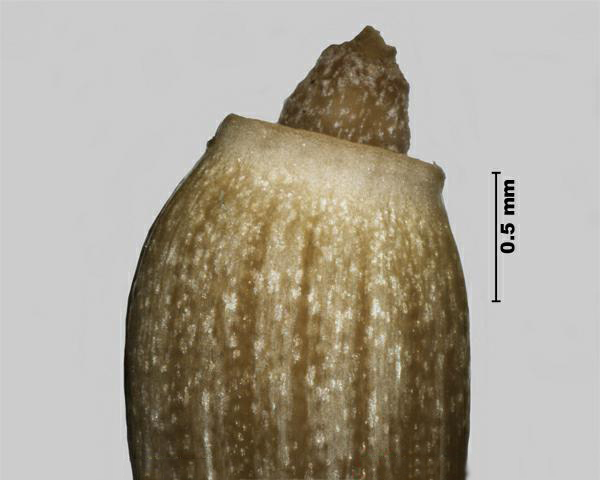Family
Asteraceae
Common Name
Nodding thistle
Regulation
Primary Noxious, Class 2 in the Canadian Weed Seeds Order, 2016 under the Seeds Act.
Distribution
Canadian: Occurs across Canada with the exception of NT, NU, PE, YT (Brouillet et al. 2016Footnote 1).
Worldwide: Native to northern Africa, temperate Asia, and Europe. Introduced in North America, Chile, South Africa, Australia, New Zealand and beyond its native range in Europe (USDA-ARS 2016Footnote 2).
Duration of life cycle
Biennial
Seed or fruit type
Achene
Identification features
Size
- Achene length: 2.4 - 3.8 mm
- Achene width: 0.9 - 1.6 mm
Shape
- Achene elongate, straight to slightly curved, tapering at the base and top is truncate
Surface Texture
- Achene glossy surface, looks varnished
Colour
- Achene light to dark golden brown; the base is canary yellow and a yellow band may occur below the collar
Other Features
- Both longitudinal lines and transverse waves may be seen under the achene's varnish-like surface coating
- The style peg at the top of achene is usually short and thick
- Immature achenes may have a thin white pappus
Habitat and Crop Association
Old fields, pastures, rangelands, roadsides and disturbed areas (Desrochers et al. 1988Footnote 3, Darbyshire 2003Footnote 4).
General Information
Nodding thistle is believed to have arrived in eastern North America in ships' ballast, and introduced into Saskatchewan through rapeseed and dispersed along railway lines (Desrochers et al. 1988Footnote 3).
This species produces large numbers of seeds (11,000) per plant and may form dense stands in disturbed areas such as gravel pits, roadsides and overgrazed pasture (Desrochers et al. 1988Footnote 3).
Similar species
Spiny plumeless thistle (Carduus acanthoides)
- Spiny plumeless thistle achenes (length: 2.5 - 3.0 mm) are generally shorter and paler than nodding thistle achenes. The achenes have the same elongate shape with a thick top peg, and both longitudinal and transverse lines occur on both species' achenes.
- Spiny plumeless thistle does not have the canary yellow base of nodding thistle, and the lines on the surface stand out in relief, while the lines on the surface of nodding thistle are covered with a varnish-like coating.
- Immature nodding thistle achenes may have lines that stand out from the surface, but they will have a yellow base.
Photos






Similar species

